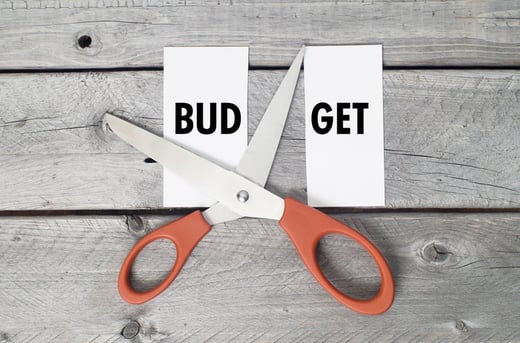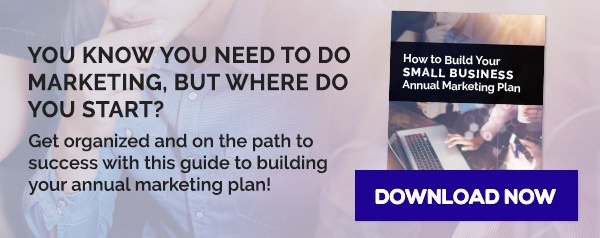 At the end of Q2 2017, Procter & Gamble, the biggest advertiser in the U.S.A., announced that due in part to the fact that it cut back its digital marketing budget by as much as $140 million, it was able to beat earnings expectations. Specifically, despite a slump in consumer spending, P&G reported a 15% rise in all-in net earnings to $2.3 billion, or a percentage point of profit margin, and at least half that gain is a direct impact of cutting its digital advertising budget.
At the end of Q2 2017, Procter & Gamble, the biggest advertiser in the U.S.A., announced that due in part to the fact that it cut back its digital marketing budget by as much as $140 million, it was able to beat earnings expectations. Specifically, despite a slump in consumer spending, P&G reported a 15% rise in all-in net earnings to $2.3 billion, or a percentage point of profit margin, and at least half that gain is a direct impact of cutting its digital advertising budget.
You may think this is counterintuitive, or that such cuts will hurt P&G in the long run. Or you may be looking at your Joplin marketing budget and wondering whether you ought to cut your digital outreach too. Either way, you’d be missing the larger lesson.
Why P&G Cut Digital
While reports don’t include where specifically P&G cut its digital marketing budget, it does come on the heels of some very public problems marketers had with YouTube earlier this year. It had left YouTube in March citing brand safety issues. Additionally, P&G has also taken issue with digital ads ending up attached to content that doesn’t align with its brand goals.
What Chief Financial Officer Jon Moeller did specifically point out is that the brand has been attempting to reduce "a significant amount of waste" in its digital efforts. In a media call, he said: "Clearly we don't need to be spending money that is seen by a bot and not a person. Clearly we don't need to be spending money on ads that are placed in inappropriate places, and that's why you see a significant reduction."
This decision comes roughly a year since P&G stated it would cut back niche targeting on Facebook, which was limiting reach and compromising its effectiveness. At the time, P&G did not cut back on its overall Facebook budget, and it’s unclear how much its Facebook efforts have been impacted now.
Our Perspective
Don’t decide to use a channel or tactic just because it’s new and trendy, or worse, because it’s what you’ve been told you should be doing. Chasing the latest shiny thing (in this case, digital) just because it’s sexy at the expense of your fundamental strategy and creative will be ineffective, especially if you don’t know what you’re doing. At its core, P&G is attempting to be strategic in its decision to cut back so much in digital. According to Moeller during an earnings call, “we didn’t see a reduction in the growth rate… What that tells me is that the spending we cut was largely ineffective.”
It’s important to note that, despite the lift in earnings, not everyone believes P&G made the right choice. Nelson Peltz, of Trian Fund Management LP, believes it will hurt P&G in the long run. Essentially, he equates the gains P&G made directly to the spending that was cut, implying that they didn’t really make gains at all. This leads us to our final point.
Don’t CUT Your Budget — Be SMART with Your Budget!
Companies need to leverage an omnichannel strategy, and that means that they still need to include still-prevalent media that’s time-tested and proven, such as radio. Powerful companies are utilizing radio because it provides 93% reach, touches all age groups and demographics, and connects emotionally with listeners. Don’t cut your digital Joplin advertising budget out of hand; instead allocate your budget carefully and plan in advance so you can spend your budget in the best places possible.
Best Practices to Ensure You’re Spending Digital Ad Budgets Wisely
- Always have a plan in place for which tools you’ll use, how you’ll use them, and how much you should be spending on them.
- Start by identifying and understanding your target audience; this will ensure you develop the most effective creative possible.
- Identify the mediums that reach your audience best and determine whether niche targeting will help or hurt your efforts.
- Strategically leverage frequency to boost impact and recall; for radio, we recommend a 21/52 plan.
- Promote across channels in a synchronized effort to be where your audience is when they’re looking for you.
Remember, avoid a digital budget cut until you’ve reviewed your company’s current spending and results. This is a time when omnichannel strategies reach consumers most effectively, and that means you should never be putting all of your eggs in one basket. Diversify your strategy and ensure you’re utilizing traditional methods that are known to be successful, like radio. That will make the best use of your digital advertising budget.

